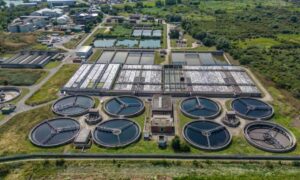
Thames Water could be renationalised, with the bulk of its £15.6bn debt added to the public purse, under radical plans being considered by the government, the Guardian can reveal.
The blueprint, codenamed Project Timber, is being drawn up in Whitehall and would turn Britain’s biggest water company into a publicly owned arm’s-length body. Some lenders to its core operating company could lose up to 40% of their money under the plans.
The contingency planning, which is at an advanced stage, reflects the deep concern in Whitehall about the state of a company that has become a symbol of the failure of privatisation in public utilities. It had no debt when it was taken out of public ownership in 1989.
One of the UK’s biggest nationalisations in more than a decade would pull Thames’ vast liabilities into the government’s debt figures. A new arm’s-length public corporation would be formed to hold the water monopoly, modelled on the company that built the £18.8bn Crossrail project.
The company serves 16 million customers in the London and Thames valley regions, but its finances have been left threadbare after previous shareholders siphoned out billions of pounds of dividends and it was hit with hefty fines for pollution and leaks. Its parent company, Kemble, recently defaulted on its debt and Thames has said it has enough money in its operating company to last for 15 months.
Renationalisation would be deeply damaging for the government during an election year, reversing the privatisation carried out by Margaret Thatcher’s administration.
Still, with Thames’ crisis likely to run beyond the expected autumn election, it may be a new Labour government that is faced with the challenge of salvaging the water monopoly.
The blueprint is being led by the Department for Environment, Food and Rural Affairs (Defra) and the Treasury. The plans for a special administration of Thames are based on the assumption that Kemble is wiped out and its lenders, who are owed about £3bn, are not recompensed from the public purse.
Some bondholders for the operating company – which sits within a regulatory ringfence – may also see the value of their loans cut by as much as 35%-40%, according to figures that underpin the potential nationalisation and have been seen by the Guardian.
In April, the Guardian revealed Thames’ plans to further tap bond markets, even amid acute concerns among existing bondholders about the write downs they may be forced to make on their existing loans to the company’s operating arm.
